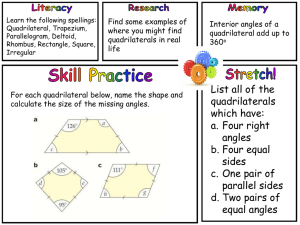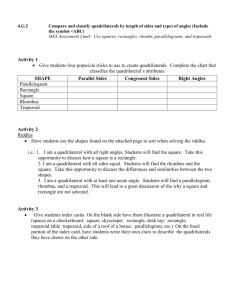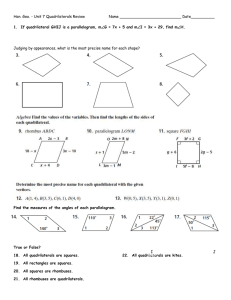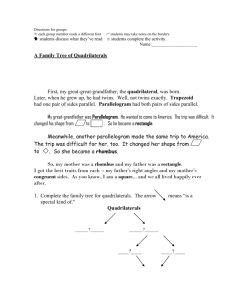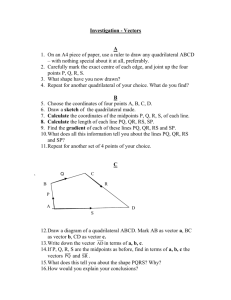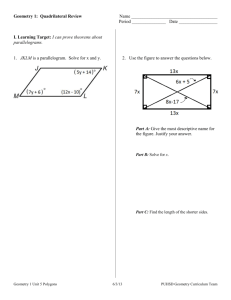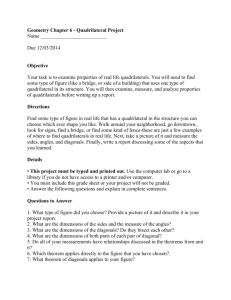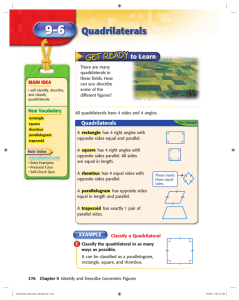Classifying Quadrilaterals
advertisement
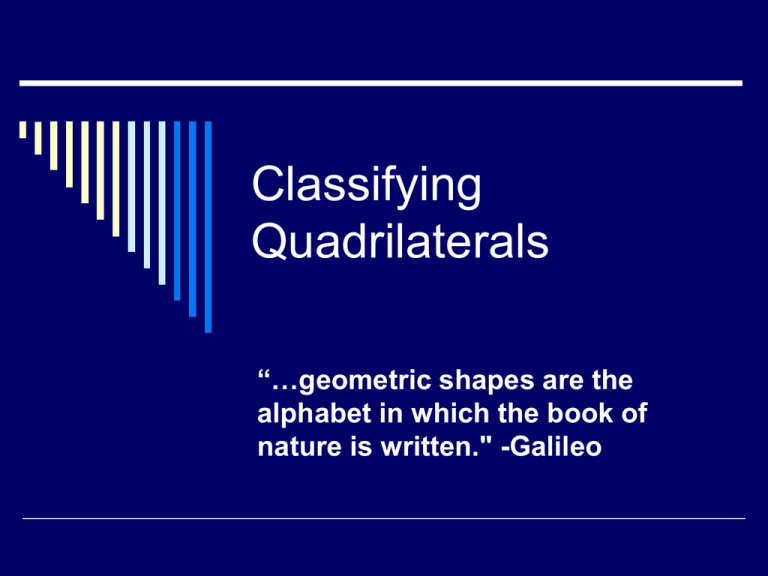
Classifying Quadrilaterals “…geometric shapes are the alphabet in which the book of nature is written." -Galileo Objectives Make distinct definitions of what parallelograms, kites, rectangles, squares, rhombi, and trapezoids are. Sort and classify quadrilaterals. Determine which shapes are and are not quadrilaterals, given examples. Designate the best name for a given quadrilateral, given examples. Construct a flow chart. What is a Quadrilateral? A quadrilateral is a two-dimensional figure formed by connecting four segments endpoint to endpoint with each segment intersecting exactly two others. It also has four sides and four angles. What is a Quadrilateral? Look around you, do you see shapes that could be termed a quadrilateral? Take about two minutes to draw five different shapes that you think could be classified as a quadrilateral. Types of Quadrilaterals Trapezoid Parallelogram Square Rectangle Kite, Dart Rhombus Rectangle Classification of Quadrilaterals A concave quadrilateral contains at least one angle that is >180o. A quadrilateral is convex if each vertex lies in the interior of the opposite angle. Name that Quadrilateral! A square is a quadrilateral with all sides and angles equal. If all quadrilaterals have 360o total, what is the angle of each vertex in a square? Name that Quadrilateral! A quadrilateral with all angles equal is a rectangle. A quadrilateral with all sides equal is a rhombus. Name that Quadrilateral! A quadrilateral with at least one pair of parallel sides is a trapezoid. Name that Quadrilateral! A quadrilateral with both pairs of opposite sides parallel and equal in length is known as a parallelogram. Parallelograms can be considered special cases of trapezoids, since they have a least one pair of parallel sides. Name that Quadrilateral! A quadrilateral with two separate pairs of equal adjacent sides is commonly called a kite. However, if the kite is concave, a dart is a more appropriate term. Are They Quadrilaterals? A B C Examples of shapes or curves that are not classified as quadrilaterals. They do not follow the definition of a quadrilateral. Can you give a reason why? Put the Information to Use… Given the information in the preceding slides, construct a flow chart of the different shapes. You should begin with the definition of a quadrilateral, and work your way down the chart. A tree diagram would be the best method for constructing the chart.
